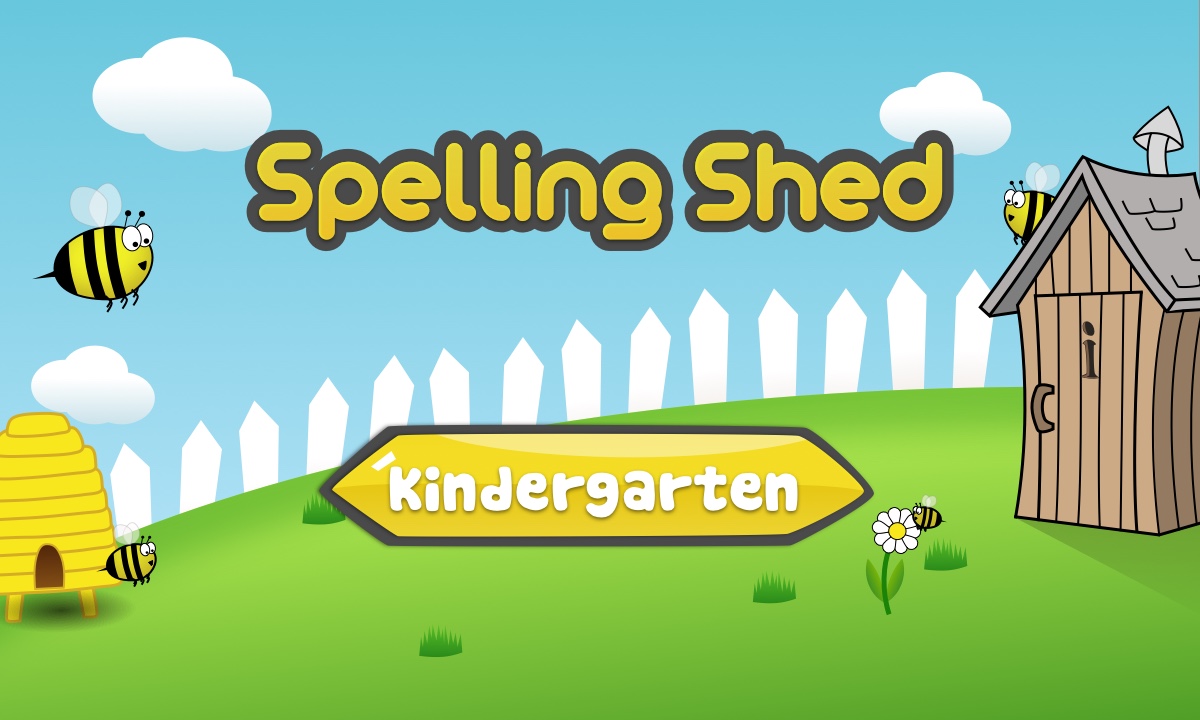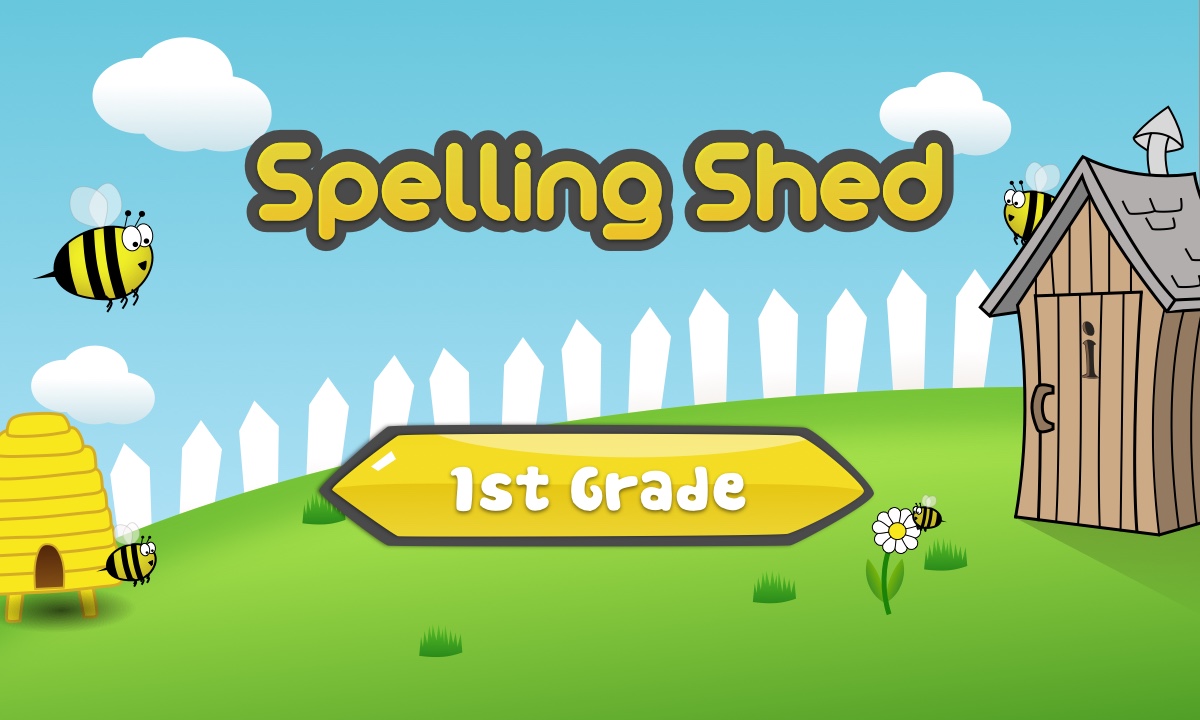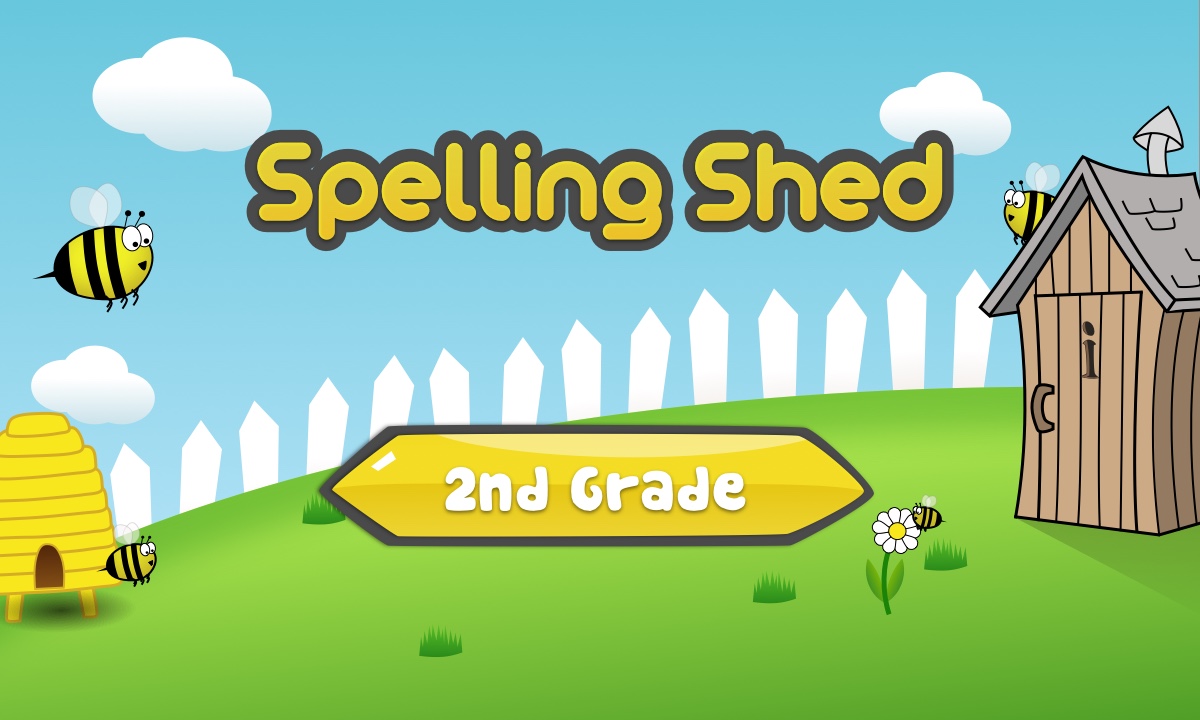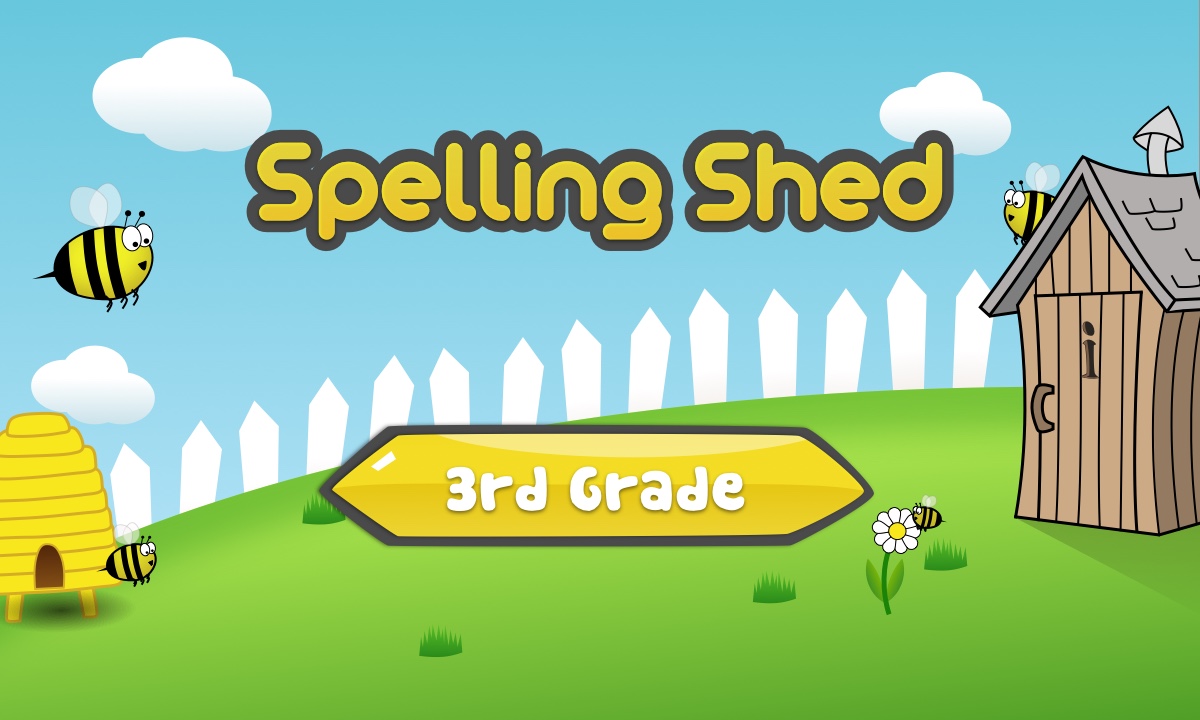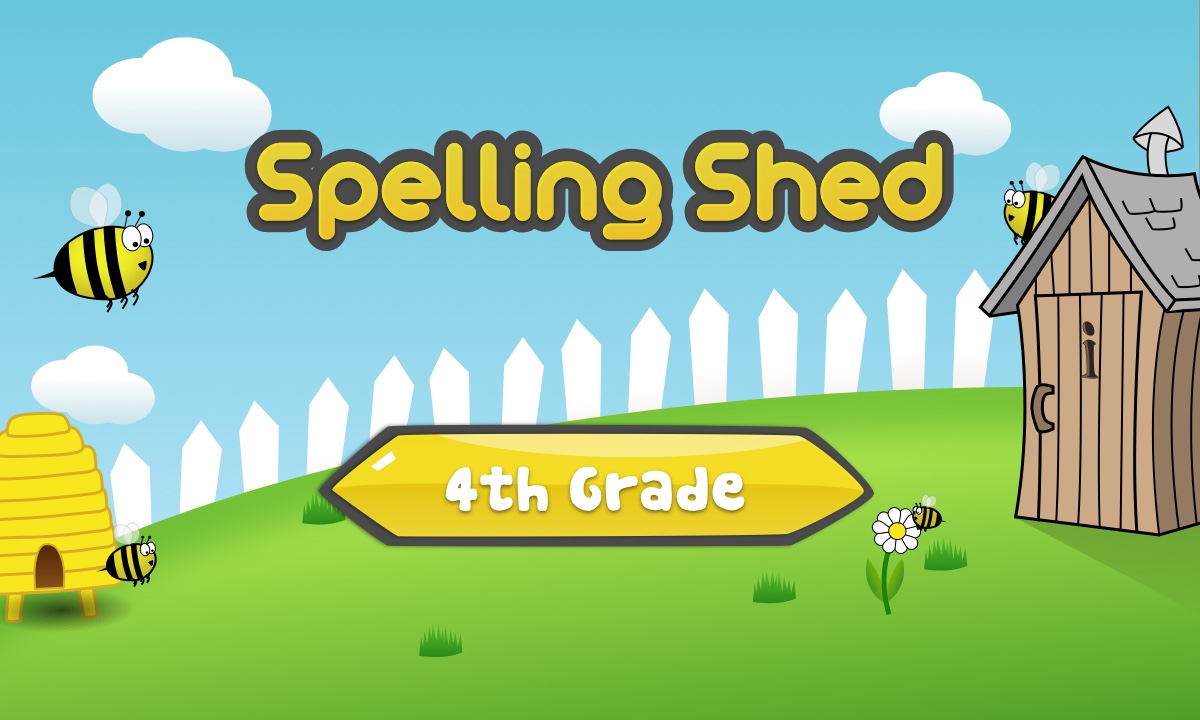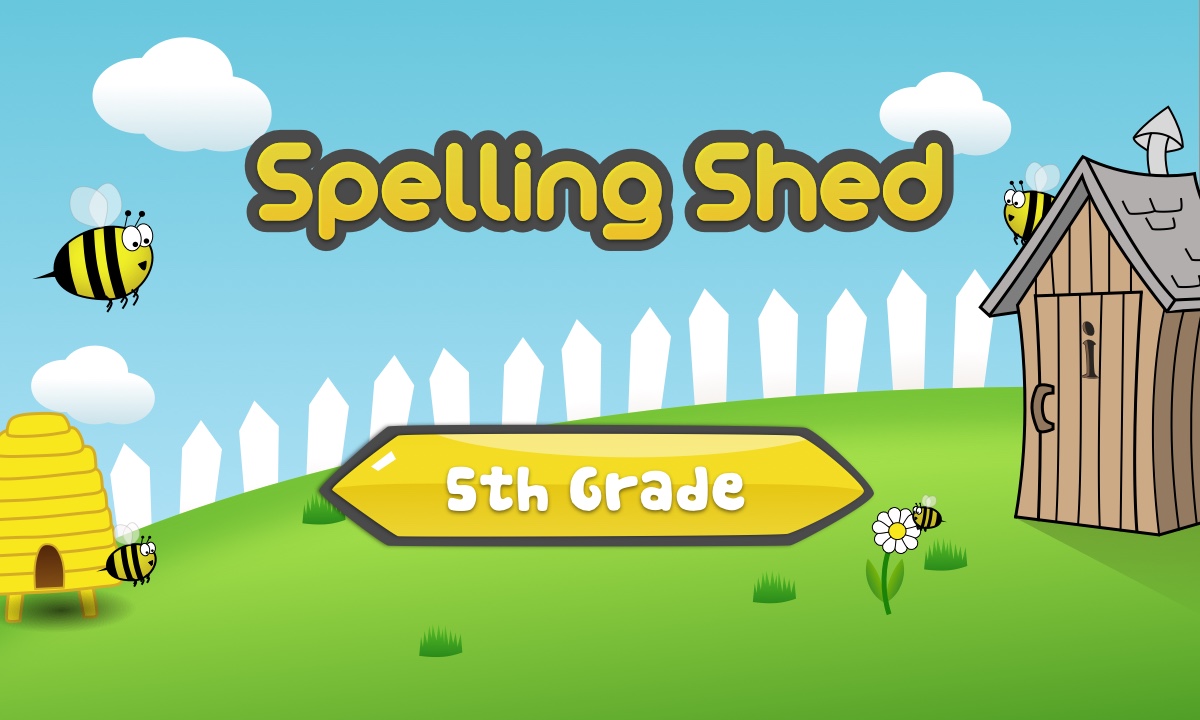SPELLING CURRICULUM
The Spelling Shed lessons were developed by applying the Science of Reading research and follow a systematic progression. The progression covers a range of phonics skills, high-frequency words, and morphological awareness, typically addressed in each grade level. At the beginning of each grade level, there is an intentional spiral review of previously taught skills, but they also include words of increasing difficulty. Throughout the progression, new and more advanced concepts/skills are delicately intertwined within the review. This aids in linking past learning to the new concept/skill and to reinforce and solidify learning.
Each Spelling Shed lesson includes a clear, easy-to-follow lesson plan. The structure of each lesson plan includes a revision of previous skills, an introduction to the target skill, main teaching inputs, and a selection of independent tasks. There are editable lesson presentations and downloadable worksheets. Lessons includes a variety of instruction and activities that are designed to engage and challenge students while they learn. Lessons incorporate phonics, morphology, etymology, and activities that support orthographic mapping. The lessons focus on teaching spelling patterns, not memorization. This helps children have a deeper understanding of orthography and apply their knowledge when spelling and reading unfamiliar words. Teachers can also assign word lists to each student so that they can practice them in class or at home, via our online games.
Every grade has core foundational skills incorporated into the list progression, at varying degrees of difficulty, depending on the grade level.
- K-2 lessons are based mostly on phoneme-grapheme correspondences, beginning with the most common patterns to more advanced ones. The majority of the words selected for each list contain only the phoneme-grapheme correspondences that have been previously reviewed, to avoid cognitive overload, help ensure focus, and attain mastery of the skill at hand.
- In grades 3-5, the shift from phonics to morphology becomes increasingly important, and the lessons begin to focus more on providing opportunities to spell through meaning, with less emphasis on phoneme-grapheme correspondences.
- Grades K-3 word lists integrate grade-level appropriate, decodable Dolch HFWs and Fry’s Instant 300 HFWs.
All lessons are based on:
- The Science of Reading research including the use of phonics, morphology, and etymology.
- A logical progression and spiral review of skills and knowledge, including grade-level appropriate high-frequency words.
- Aligns with current ELA national and state standards
Each lesson:
- is based on the latest research in the Science of Reading and is designed to be easy to use and highly effective.
- includes a variety of instruction and activities that are designed to engage and challenge students while they learn.
- is designed to be flexible to fit within the variable timetables that schools have.
- has main teaching inputs, which can then be followed up with additional activities that can be carried out during an extended session or revisited throughout the week in order to consolidate the learning further.
- has elements of the key areas below embedded in its core.
Orthography
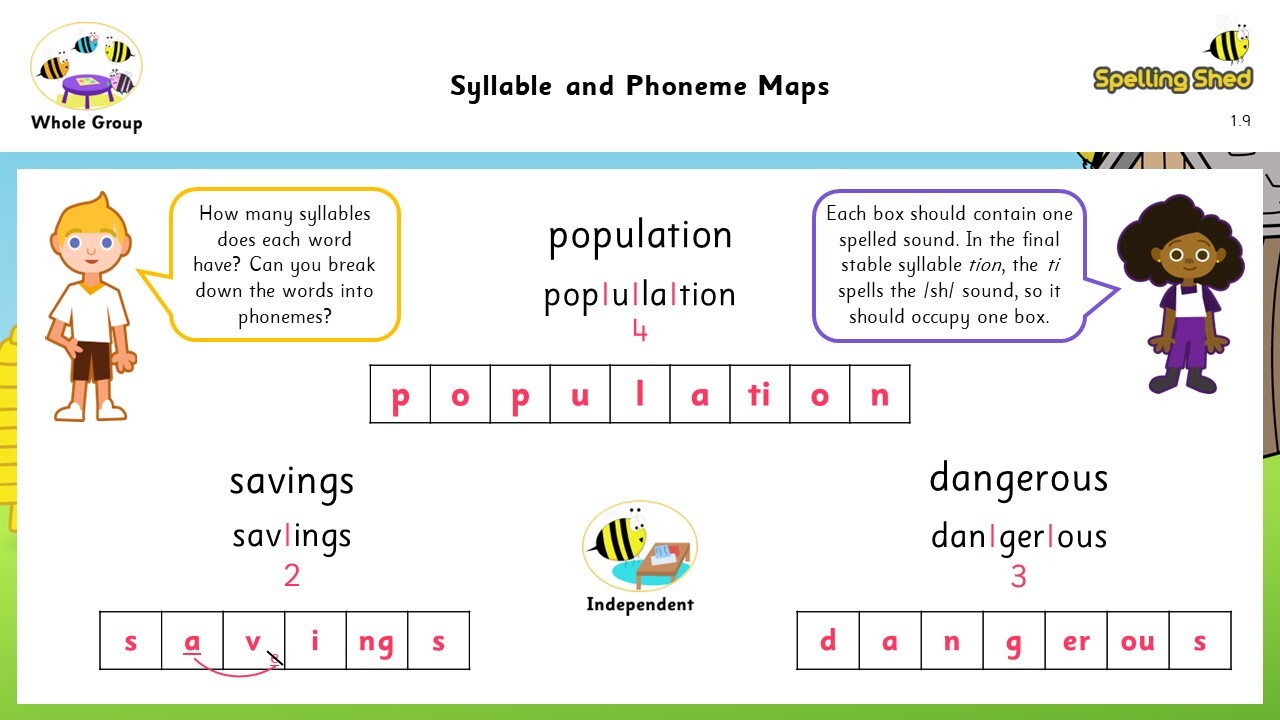
“Orthography is how patterns of letters are used to spell certain spoken sounds in a language.”
In the new Spelling Shed lessons, students will continue to build on the firm foundations built while studying phonics in their early years of education. They will continue to break down words into the smallest units of sound and cluster them into syllables in order to read and write words efficiently.
Through adult-led discussion and investigation children will become more secure in their knowledge of English orthography based on the frequency and position of the sounds within words.
Morphology
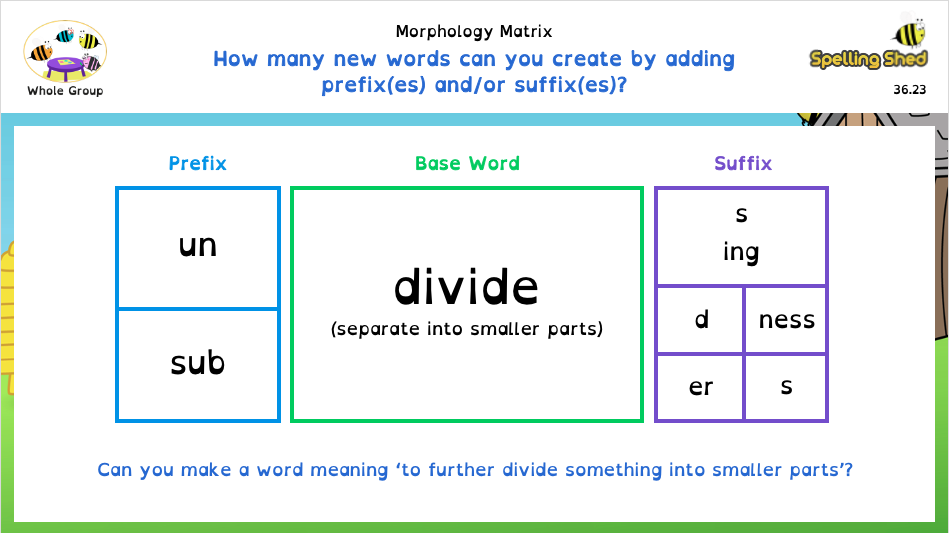
“Morphology describes how words are structured into subcomponents to give meaning.”
Children will study morphemes, the smallest units of meaning within a word. Lessons include adult-led discussions and investigations into word parts, their meanings, and how this affects spelling.
There are lessons throughout the curriculum that consolidate children’s knowledge of common morphemes such as root formations, prefixes, and suffixes.
Etymology
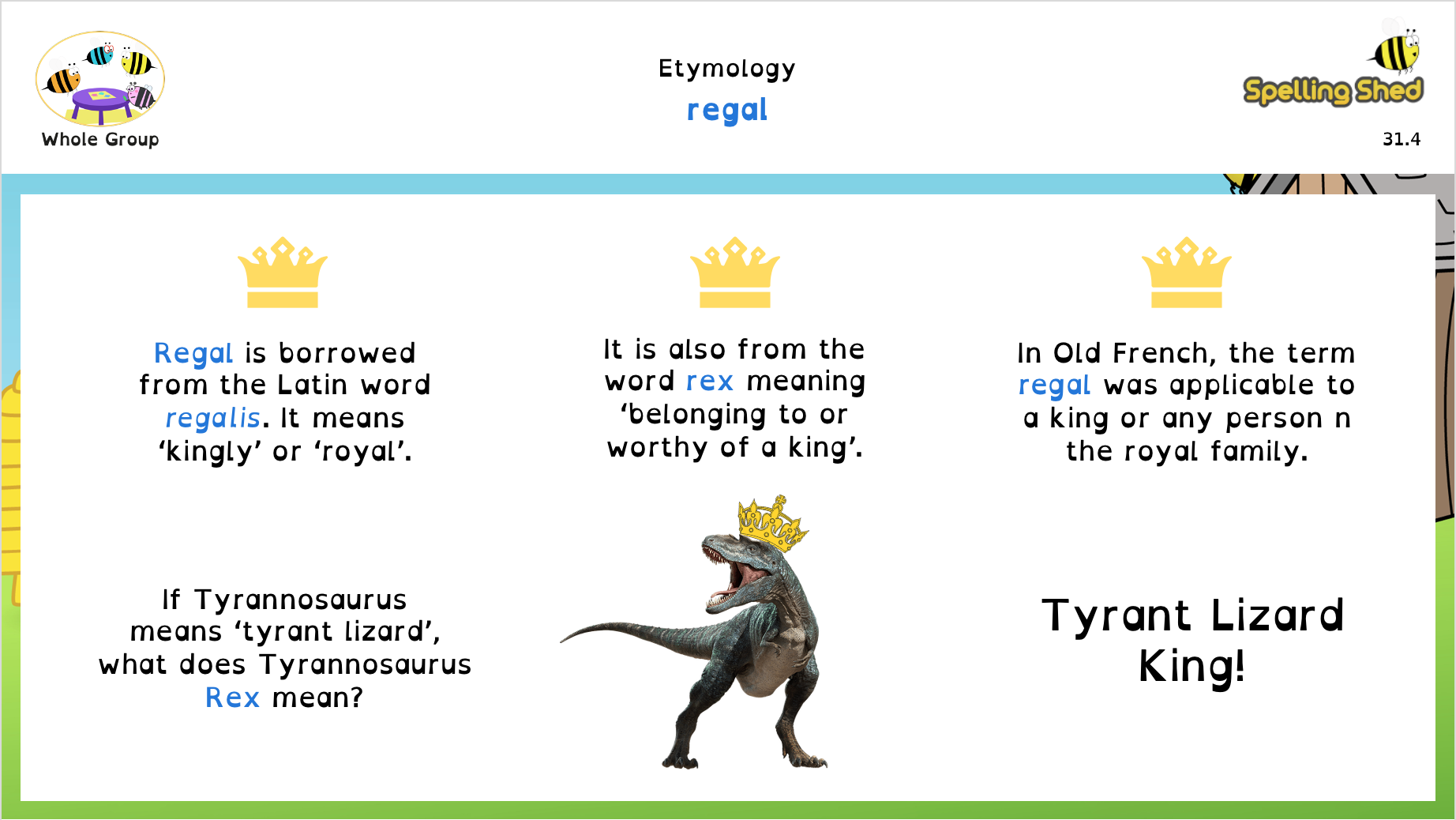
“Etymology describes the origins of words, which can lead to certain patterns of spelling.”
Most lessons in the curriculum include an etymology element that allows educators to teach the children about the origin of the words that they are learning about.
Children will be able to see how the English language has, over time, borrowed and integrated words and spellings from a range of source languages. For example, the latinate verbs which follow Latin prepositions in English words such as: -act (do), -pute (think) or -opt (choose).
What does research say?
“Research has shown that spelling and reading build and rely on the same mental representation of a word. Knowing the spelling of a word makes the representation of it sturdy and accessible for fluent reading.”
(Snow et al., 2005)
“As an individual repeatedly associates phonemes to graphemes and larger units of language (i.e., orthographic mapping), these associations become ingrained in the memory and easier to retrieve with automaticity.”
(Ehri 1998, 2005)
“With practice, individuals begin to automatically connect words’ pronunciations, meanings, and spellings and this allows an individual’s speed and accuracy to improve.” (Perfetti 2007, Ehri 2014) This allows the cognitive resources (i.e., working memory) to be allocated to reading comprehension.
(Fletcher, Lyon, Fuchs, & Barnes, M.A; 2019)
“Failing to provide a grade-by grade spelling curriculum, and explicit spelling instruction is often a missing piece of literacy instruction and a major reason why so many of our students have difficulty with reading. Good spellers tend to be good readers, and many students are poor readers because they can’t spell.”
(Gentry, 2019)
“Making the connection between spelling and reading is a transformational concept and a missing link that can lead to better reading and higher test scores.”
(Gentry, 2019)







